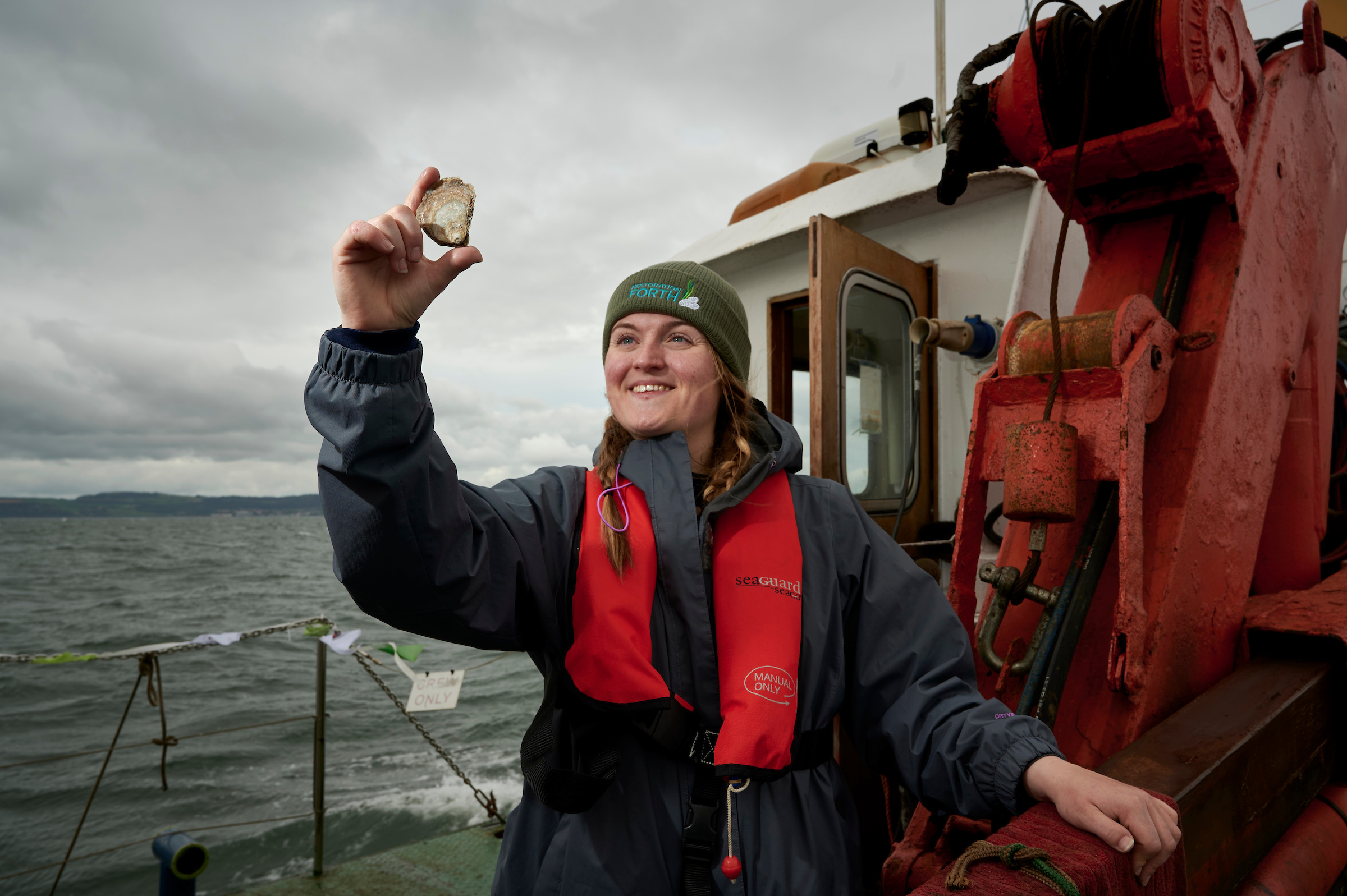
Oysters returned to Firth of Forth for first time in a century
After a 100-year absence, native oysters are being reintroduced to the Firth of Forth.
Historically, enormous native oyster beds provided an important source for food and livelihoods in the area. But the marine species was lost due to overfishing and industrial development.
The groundbreaking Restoration Forth project hopes to transfer 30,000 oysters to the area and create an oyster reef in the estuary, which in turn will provide a habitat for other species such as fish, crabs, sea snails and sponges.

Emmy Cooper Young from Heriot Watt Uni with native oysters.
‘I’ve been working on the Forth for over 50 years and have read and heard stories of oysters and Newhaven fishermen,’ said Bill Simpson, skipper of the Conserver boat.
‘It’s good to know we will have oysters back – let’s hope they go forth and multiply.”
The oysters also filter water and improve water clarity, meaning more light can penetrate through to the seabed, allowing plants like seagrass to photosynthesise and grow.
Those reintroduced to the Forth were sourced from Little Loch Broom, near Ullapool in the Highlands, where they were treated to adhere to biosecurity protocols before being transported to their new home.
‘It’s so exciting that the first native oysters are now in their new home in the Firth of Forth,’ said Caitlin Godfrey, shellfish engagement officer at Marine Conservation Society.
‘Alongside seagrass meadows they will play a crucial role in bringing the estuary back to life and transforming the future of this coastal environment for people and nature.
‘We couldn’t have come this far with the project without the support of local communities.’
Earlier this year the first seeding of seagrass was successfully carried out in three locations along the Firth of Forth coast.
And the germination looks to have been successful as green shoots are now appearing with species, such as juvenile flat fish, already using the young plants as a nursery.
Read more stories on Scottish Field’s wildlife and conservation pages.
Plus, don’t miss the October issue of Scottish Field magazine.
TAGS

